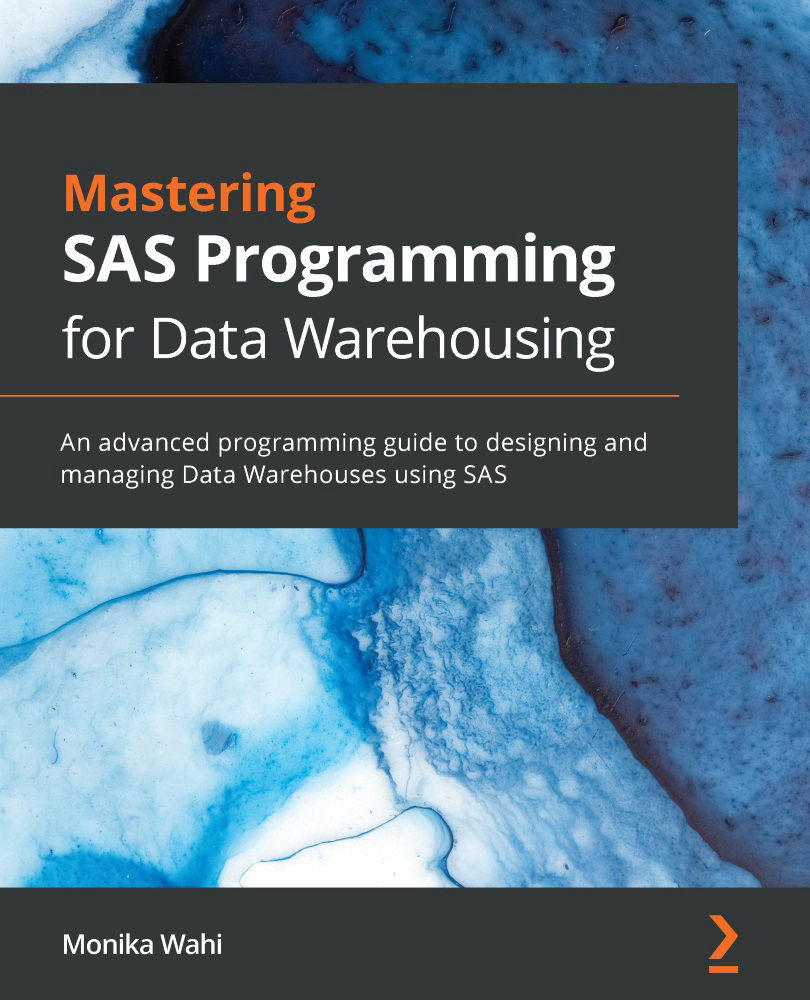Viewing data in SAS
When preparing ETL code, it is important to be able to view raw data. However, this can be tricky because typically, a programmer wants to view only certain parts of the dataset, such as certain columns, or rows with certain values. This section first describes what SAS users have traditionally done to view data, which is to use PROC PRINT. Options that can be set on PROC PRINT to control the data being viewed are discussed. Next, we consider using a newer procedure for managing data, PROC SQL. PROC SQL performs the same tasks as PROC PRINT but uses Structured Query Language (SQL) syntax, so may be easier for SQL programmers to learn. Because we are using criteria to filter data, and these require us to use arithmetic operators, this section also covers how to use arithmetic operators in SAS. Finally, this section covers different ways of viewing SAS datasets through windows in SAS.
Using PROC PRINT to view data
In this book, we have already used PROC PRINT...



































































